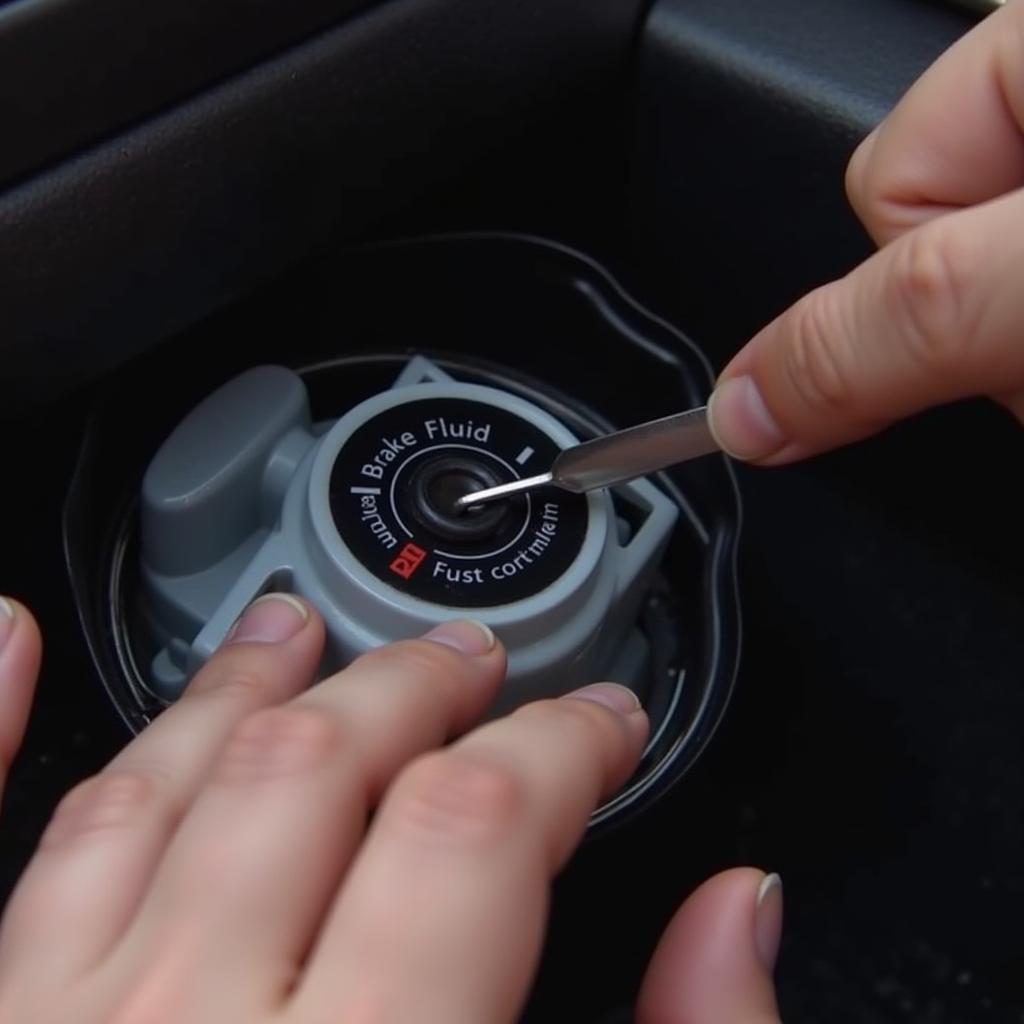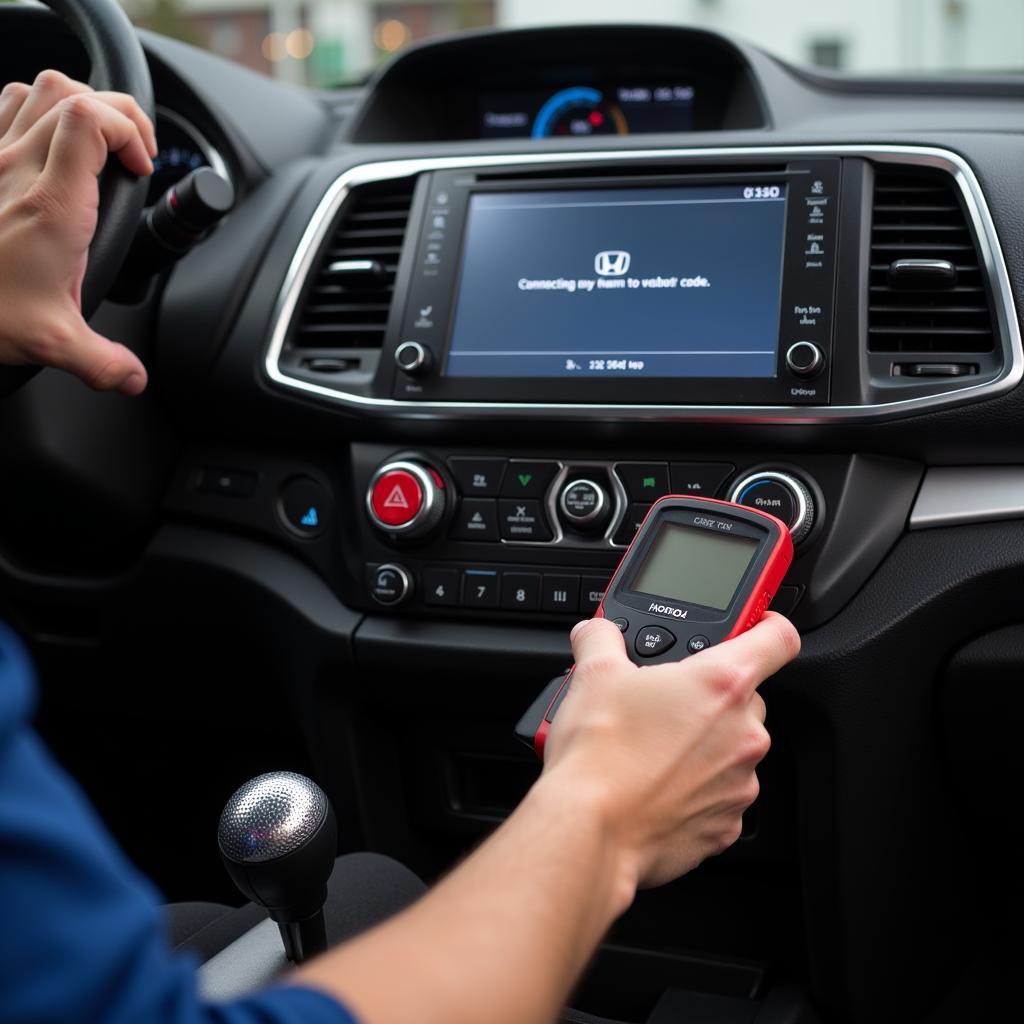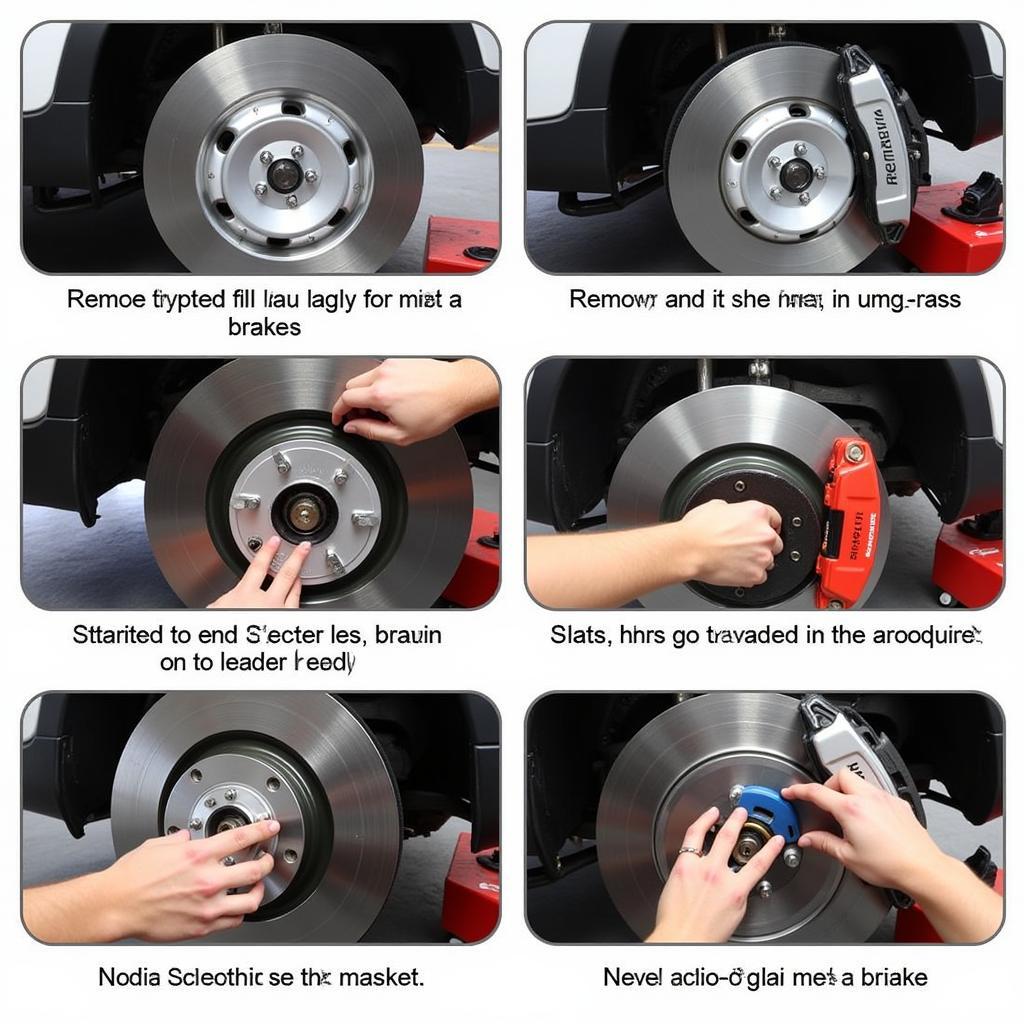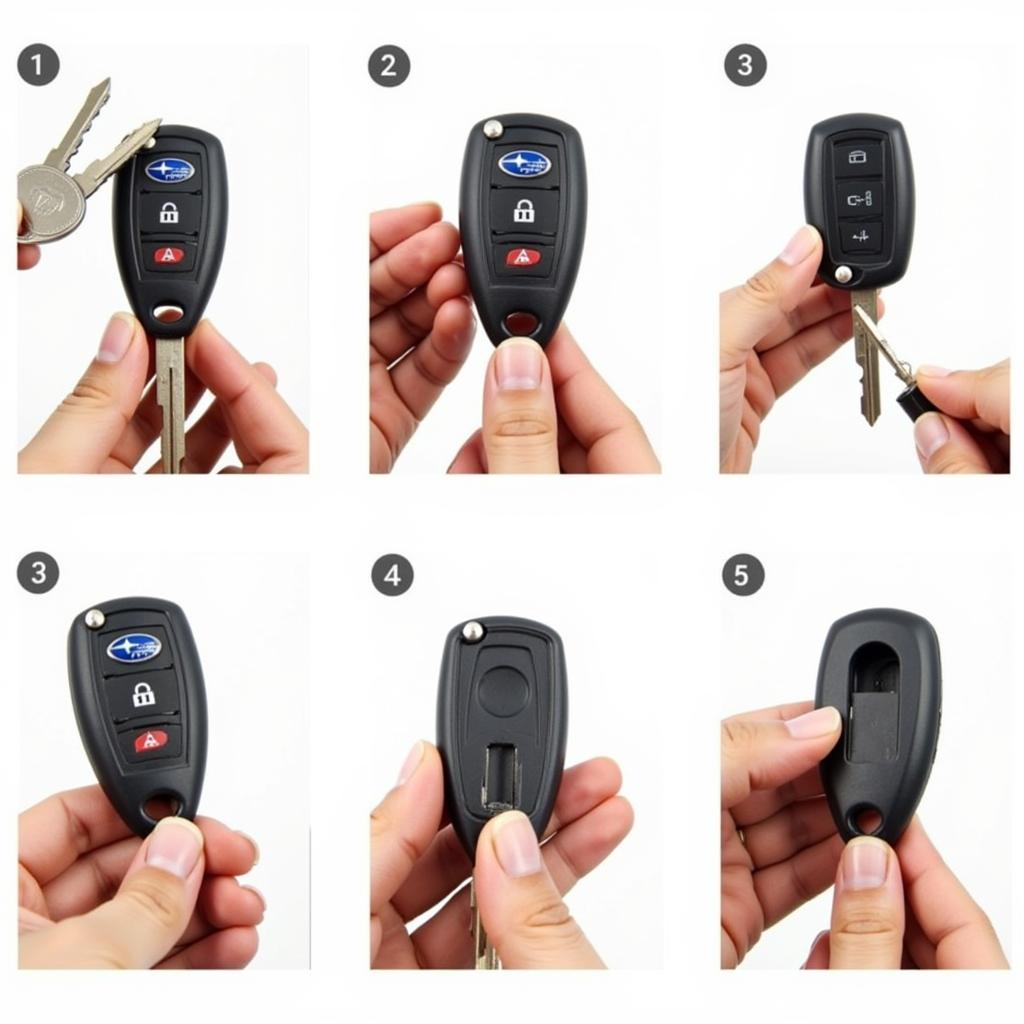The brake system warning light on your Honda CRV is a crucial safety feature. When illuminated, it signifies a potential issue with your braking system that requires immediate attention. Ignoring this warning could lead to reduced braking performance and increase the risk of an accident. This comprehensive guide will delve into the common causes of a brake system warning light on a CRV, how to diagnose the problem, and potential solutions.
Understanding the Brake System Warning Light
The brake system warning light, often a red exclamation mark within a circle, can indicate several problems. It’s essential to understand that this warning light doesn’t necessarily mean your brakes are about to fail. However, its illumination signifies a problem that needs immediate inspection.
Common Causes of a Brake System Warning Light on a CRV
There are several reasons why your CRV’s brake system warning light might be on. Here are some of the most common culprits:
- Low Brake Fluid: This is one of the most frequent reasons for the warning light to illuminate. Brake fluid is essential for transmitting force from the brake pedal to the wheels, and a leak or low fluid level can significantly compromise braking performance.
- Worn Brake Pads: Brake pads are designed to wear down over time. When they reach a certain thickness, the brake pad wear sensor will trigger the warning light, indicating it’s time for a replacement.
- Faulty Brake Pad Sensor: While less common, the brake pad sensor itself can malfunction, causing the warning light to illuminate even if the brake pads are still in good condition.
- Issues with the ABS System: The Anti-lock Braking System (ABS) helps prevent wheel lockup during hard braking. A fault within this system, such as a malfunctioning sensor or control module, can trigger the brake warning light.
- Parking Brake Engaged: Sometimes, the simplest explanation is the most likely. If the parking brake is even slightly engaged, it can trigger the warning light.
Diagnosing the Problem
 Checking Brake Fluid Level on a Honda CRV
Checking Brake Fluid Level on a Honda CRV
When the brake system warning light appears, the first step is to determine the root cause. Here’s a step-by-step guide:
- Check the Parking Brake: Ensure the parking brake is fully disengaged. Even a slight engagement can illuminate the warning light.
- Inspect Brake Fluid Level: Locate the brake fluid reservoir under the hood (refer to your owner’s manual if needed). The reservoir has minimum and maximum level markings. If the fluid level is below the minimum, add the recommended brake fluid type for your CRV.
- Visually Inspect Brake Pads: If possible, look at the brake pads through the spaces between the wheel spokes. If you see less than ¼ inch of friction material remaining, it’s likely time for new brake pads.
- Scan for Diagnostic Trouble Codes (DTCs): While you can visually inspect some components, a deeper diagnosis often requires a specialized OBD-II scanner. This tool can read diagnostic trouble codes stored in your CRV’s computer, providing valuable insight into the specific problem.
 Scanning for Diagnostic Trouble Codes on a Honda CRV
Scanning for Diagnostic Trouble Codes on a Honda CRV
Seeking Professional Help
Diagnosing and repairing brake systems often require specialized knowledge and tools. If you are uncomfortable performing these checks or are unsure about interpreting the results, it’s crucial to seek professional help from a qualified mechanic or your Honda dealership.
“Attempting to repair a complex system like the brakes without proper training can lead to further damage and compromise your safety,” advises John Smith, Senior Automotive Technician at XYZ Auto Services. “It’s always best to err on the side of caution and have a professional diagnose and address any brake-related concerns.”
Preventing Future Issues
While some brake system issues are unavoidable due to wear and tear, you can take steps to prevent premature problems:
- Regular Maintenance: Follow your CRV’s recommended maintenance schedule for brake fluid flushes and brake pad inspections.
- Quality Parts: When replacing brake pads, rotors, or other components, opt for high-quality parts from reputable brands.
- Avoid Riding the Brakes: Continuously resting your foot on the brake pedal can lead to excessive heat and premature wear.
 Replacing Brake Pads on a Honda CRV
Replacing Brake Pads on a Honda CRV
Conclusion
The brake system warning light on your Honda CRV should never be ignored. While the issue might be minor, like low brake fluid or engaged parking brake, it could also indicate a more serious problem requiring professional attention. By understanding the common causes, knowing how to perform basic checks, and seeking timely professional help, you can keep your CRV’s braking system in optimal condition, ensuring your safety and the safety of others on the road.
Remember, your brakes are your vehicle’s most crucial safety feature. Don’t hesitate to seek professional help when needed.
Frequently Asked Questions
- Can I drive my CRV with the brake system warning light on? It’s highly discouraged. While you might still have some braking ability, driving with a compromised brake system is dangerous.
- How often should I check my brake fluid? It’s a good practice to check your brake fluid level at least once a month and top it off if needed.
- How long can I drive on worn brake pads? Once the brake pad wear indicator triggers the warning light, it’s crucial to replace the pads as soon as possible.
- Why is my brake system warning light flashing? A flashing brake system warning light often indicates a severe issue with the ABS system, requiring immediate attention.
- How much does it cost to fix a brake system warning light? The cost can vary widely depending on the underlying problem.


